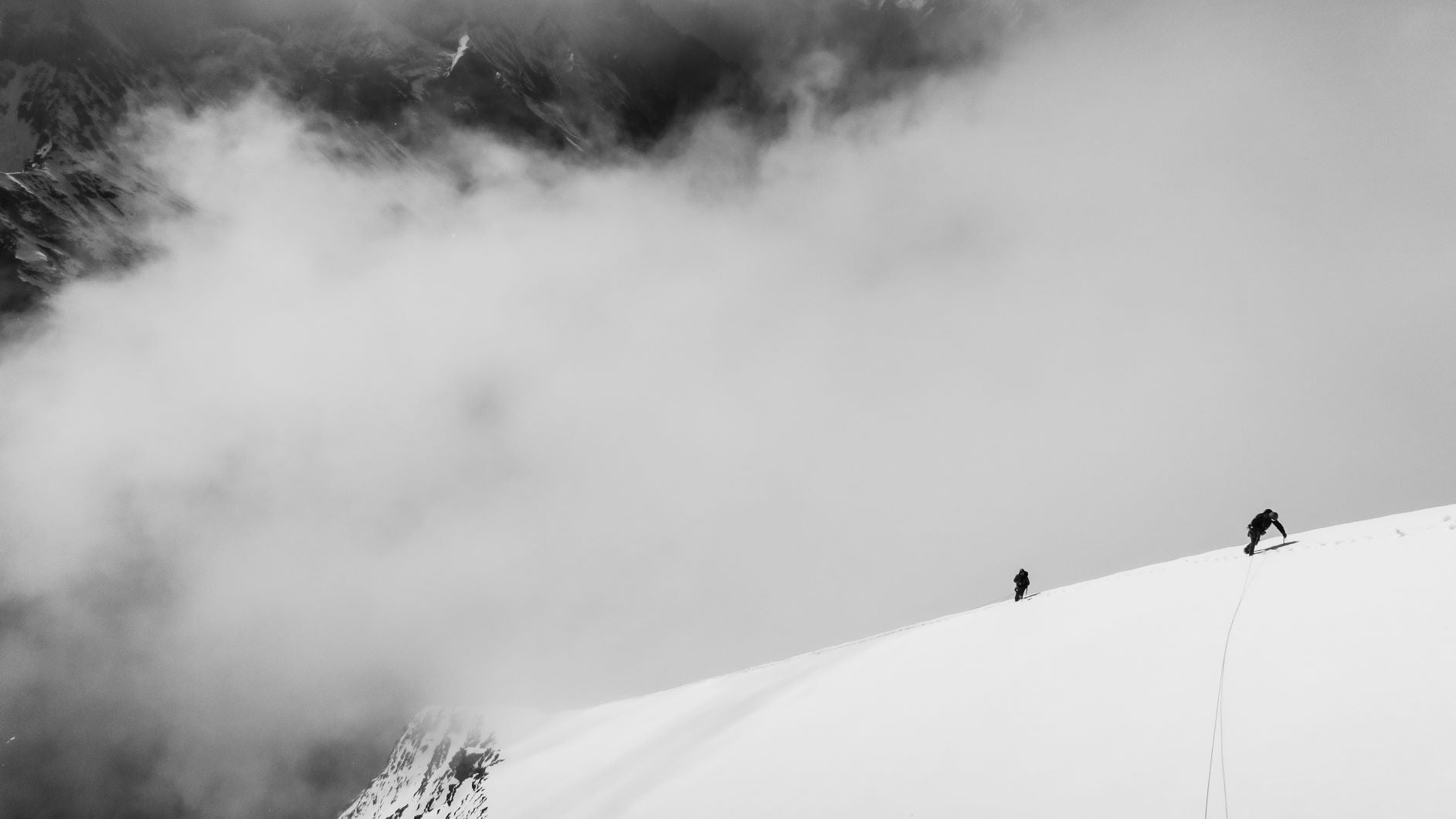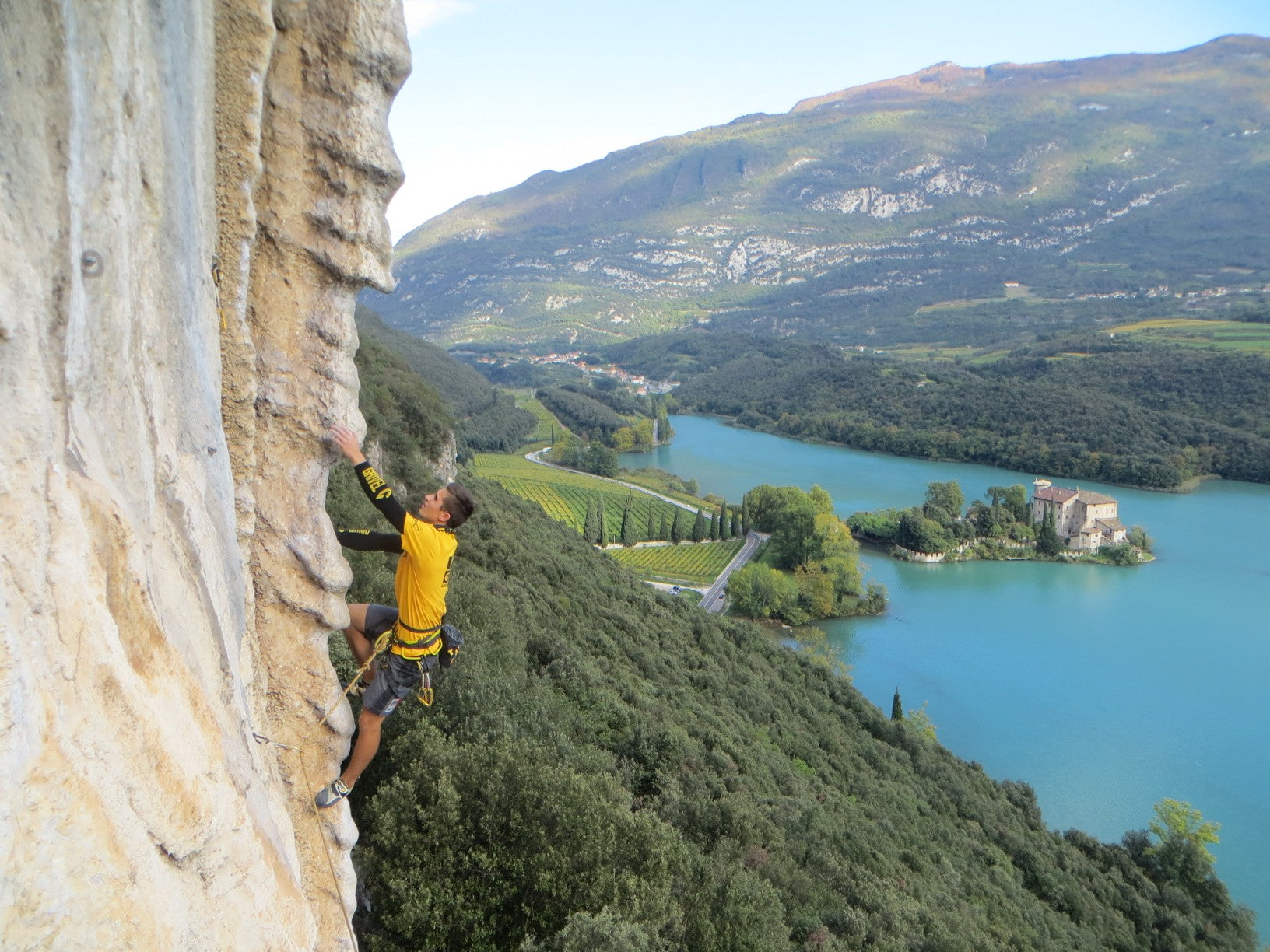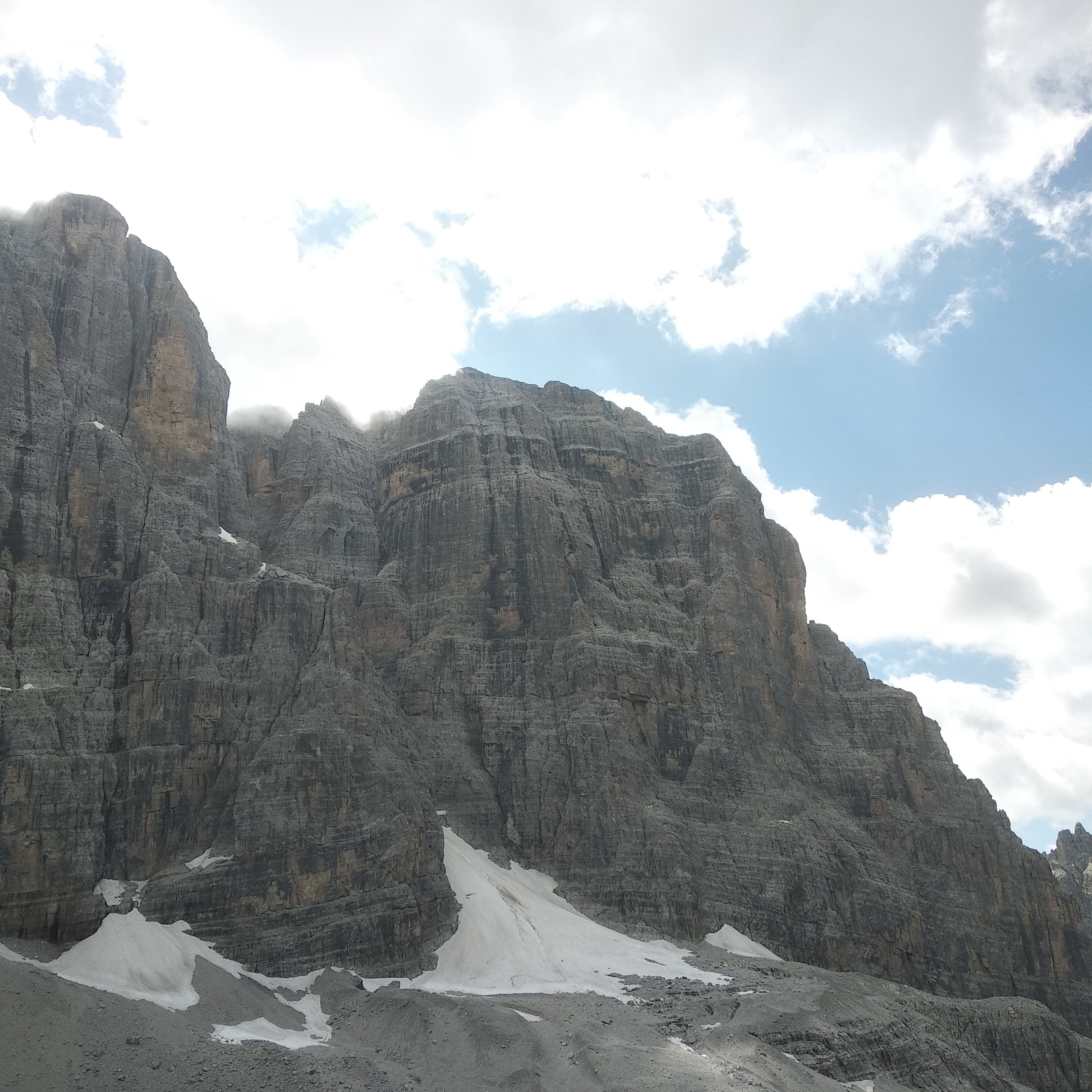
Estrella Impossible by Damien Tomasi
Published on 03/09/2019
Iberian mountaineers have always shone.
Whether in the Alps or the Himalayas, their style, borrowed from simplicity and elegance, the difficulty of their routes and the way they managed to climb gave birth to true myths.
The most representative example is obviously the climbing of the south face of Annapurna by Enric Lucas and Nils Bohigas when they were barely over 20 years old, penniless and completely unknown. A major achievement, almost forgotten for more than two decades until the Annapurna came back in the limelight, for other reasons.
When we discussed a possible project in the Indian mountains, our friend Martin Elias, the most French of Spanish climbers, immediately told to us of a route he has always dreamed of climbing: the famous “Estrella Impossible” in the western face of the Bhagirati III.

In June 1984, the same year of the opening of the south face of Annapurna, 4 Catalans completely unknown, succeed in 16 days, without much experience of the Himalayas, what Georges Bettembourg then called "The Salathe Wall of the Himalayas”. These are their names: Juan Aldeguer, Sergei Martinez, Jose Moreno and Juan Tomas. Four talented climbers, trained to difficult aid climbing and challenging free climbing on the sunny limestone of Montrebei and Ordesa.
At Bhagirathi III, they set fixed ropes until they reached the next bivouac site. Without portaledge, it was the beginnings of the style that we call, today, "capsule".
In the fall of the same year, Canadians David Lane (the founder of the brand Arc'Teryx) and Scott Flavelle repeated the route in alpine style, in 9 days. Arrived at the top of the pillar, unable to haul their bags in the upper zone, they decided to dump the superfluous gear and to continue towards the summit and to go down on the opposite side.
During the spring of the following year, the French Guy Mevellec, Jeff Lemoine and Pierre Faivre repeated the pillar in about ten days, fixing 600 m of fixed ropes.
Finally, in the autumn of 2003, the Swiss Rainer Treppte and Simon Anthamatten approached the pillar with the aim of opening a new route, closer to his edge. Soon, they realized that the projected line was actually that of the Catalans and fell back on it. Again, after 16 days of climbing, 600 m of fixed ropes and having added many spits, they signed the 4th ascent of "Estrella Impossible".
Far from the mountains, our adventures in the Indian mountains began, like every expedition in this country, under the sweltering heat of New Delhi, at the buildings of the Indian Moutaineering Foundation, at the end of April.

To reduce the fees for the permit, the liaison officer and the agency, but also to have the pleasure of spending holidays together, our team has grown: Korra, Sebastien Corret (Bastiou), Martin and me would try the Catalan pillar while Fanny Tomasi-Schmutz, Elodie Lecomte and Danny Ulhmann aimed at the pillar of the Scots.
On April 28th 2017, we board the bus to Gangotri. Then, after two days of walking, we leave our belongings at the idyllic base camp of Nandavan, on the right bank of the Gangotri Glacier, facing the Shivling.
After a brief acclimatization, consisting of a few portages to the advanced base camp, we hit the foot of the pillar on May 7th. The bags were heavy and the breath was short. That day, we set two pitches in mixed then aid and went down to the base camp for a day of rest.
On May 9, we were at the top of the two ropes fixed the day before. In the early morning, while the wall was still in the shade, I started in the third length listed A3 +: a very thin crack "expanding" followed by a double pendulum. Not necessarily very concentrated and surely a little too confident, after several meters on average holds, the scale deviates a few millimeters after hammering too much on a flat area ... In a split second, I found myself back to the belay, alongside Bastiou who assured me. 4 points were torn off, the carabiner on which were hung the pitons opened and 7 of them preferred not to continue the adventure and to join the bottom of the way. Knowing that we had only 15 and it remained a little over 35 lengths, the adventure could not start under better hospices!

I finished the pitch and passed the hand to Bastiou for the following pitch in A2. The sun warmed us and we could enjoy, in climbing shoes, the magnificent granite of Bhagirathi despite some patches of snow that tended to wet the cracks. Over the course of the afternoon, the clouds swelled to give a few flurries of snow, shortly before the beginning of the evening. At 7 pm, we reached our first bivouac site at R11. The day was over, and despite the discomfort of the place and the snow that fell, we were not unhappy to settle in the tent although, badly mounted, it had the bad tendency to want to caress our face... Because of the weather and the mediocrity of the bivouac, we had no dinner that night.
The day after, the weather was gloomy and the clouds had already enveloped the Shivling. It was the turn of Korra and Martin to lead our team, while Bastiou and me took care of the bags.
Stressed by the weather, we didn’t take the time to have our breakfast either. It was 5.30 am when Korra started in dry in the first pitch of the day, rated 5+ / A1, then, always with crampons and ice axes in the two following pitches, which led us to the great special dihedral in the middle of the route.
Martin took the lead, and in 3 great pitches he reached the top of the dihedral. The rock and the cracks were beautiful but the weather deteriorated and all ideas of free climbing dissolved as the snow began to fall.
As the day before, we reached the bivouac at around 19h, and Korra had just the time to fix the following pitch before nightfall.
After an hour of work, we managed to dig two decent terraces. For this route, in addition to our "ASCENT" tents, for the first time, we brought some "Guide Tarp". Very often used by American climbers, this canvas allows to enlarge the surface of the bivouac by filling it of snow. An artifice that allowed us to significantly improve our platform and the comfort of the bivouac.
On May 10th, with Bastiou we went up the rope fixed the day before that led us to the foot of the last bastion of the pillar. As every day, the weather was gloomy and the less steep parts, supposed to be easier, were full of snow and required a lot of effort and attention. At lunch time, we were finally at the foot of the last crux: two pitches quoted A3 and A2. The altimeter displayed 6000 m.
The rock was much worse than in the rest of the route. Bastiou fighted his way through huge scales and arrived to the belay safely and relatively quickly.

The following pitch seemed easier: a thin crack, where a few pitons were visible, which was going to dissolve under a roof… Bastiou quickly went back the first part of the crack where the pitons were positioned in a quite classic way, then ... nothing! No trace of pitons, no more crack! Nervously, he tried to swing left, without success. We didn’t understand anything, the length is however rated only A2!
Above him, a very fine crack rose a few meters. Febrile, he resolved to use the birdbeaks. Slowly he stood on small pieces of metal and, having placed six in a row, he finally managed to stuff a good Camalot 4 under the roof! We just learned at our expense that the A2 "Marc Gamio" style also exists in the Himalayas!
After all these emotions, we had our dose for that day and, although it was still early, we set our climbing ropes and went down to our bivouac, 100 m lower.
On May 11th. Martin and Korra equipped themselves quickly and went back up the old rope. It hanged far from the wall over a hundred meters and it took us more than an hour each to reach the highest point.

Martin quickly climbed another pitch of A2, much less difficult than the day before, which dropped us at the foot of the last pitch of the pillar.
In this one, first in climbing shoes, Korra fell after a few meters, in a slab covered with snow and ice. He returned to the starting point and changed strategy. Armed with his crampons and ice axes, he tried more left, hooking scales and cracks. At the end of 20 meters of magnificent dry at a little more than 6000 m, he installed a cam to swing towards an obvious dihedral, key of the pitch and the pillar. As he started tensioning on the rope, the cam was torn off and his fall was held back by a red Totem cam several meters lower. To hell with greed! Too bad for the cams, it was going to be the point of our pendulum and it would finish his career here. Some dry movements later, Korra reached the belay and the top of the pillar.
The end of the pillar also marked the end of granite. From this point, the beautiful scales and cracks we climbed on for 4 days gave way to the shale and the black ice.

After two pitches, unable to find a comfortable bivouac, Korra stopped on a vague spur overlooking the large slope of the west face. In the dark, we cut, in the black ice and the bad rock, a round big enough for our three pairs of buttocks. Korra settled two meters higher on a sloping rock. That night, the tents remained in their covers.
Although extremely uncomfortable, the bivouac was fantastic. We were in a completely amazing place, facing the Shivling, Meru and Thalay Sagar, over a slope of almost 1000 meters. A hundred meters on our right, old fixed ropes hung in the overhangs, relics, as Rolando Garibotti told "from a time when men were much braver than today".
In front of us, the Russian (1998) and Slovenian (1990) routes ran through the impressive slope of the west face. In the bible "Himalayas in Alpine style", Stephen Venables considered the route opened by Janek Jeglic, Silvo Karo and Francek Knez as excessive and inelegant ... In 1991, the Slovenian rope team had climbed, in alpine style (!) the western face of Bhagirathi III at its center, the steepest part and where rock is the most rotten.
After 15 days of climbing, they had reached the summit completely at the end of the roller. Back to the base camp after a descent as epic as the climb, their cook and liaison officer had deserted and returned to Gangotri ... hungry and exhausted, they had to walk more than 20 kilometers before returning to civilization and something to eat.
Although the quality of the climb must be as mediocre as the rock, the elegance of the Slovenian way lies rather in the boldness of their ascent and the adventure they experienced there.

On May 13th, in the morning, the wind had risen and we needed a lot of time to come back to our bivouac. The day before, we had the idea to throw a bag filled with the superfluous material as the hauling of the bags had become painful in this ground ... In the morning, one of our two Haul Bags joined the foot of the route after a free fall of more than 10 seconds.
Above us, the already vertical wall was still upright ... Martin, our hero of the day, avoided the overhangs of shale by a long crossing to the left. Then, it climbed in the axis a long length in black ice. Above, the route to follow was not obvious. A last lock separated us from the long summit slope and the end of the difficulties. Calmly, Martin made his way through the last shale overhangs and then, after a few delicate steps of mixed over protections as rotten as the rock he opened at the foot of the last slope.
To our surprise, it was much steeper than we thought and a few inches of powdery snow covered the blue ice which made the task even more painful.
Pitch after pitch, we gained altitude. To make us keep a good rhythm, we thought of Messner and his technique of eleven steps. Sometimes we stuck to it. Sometimes no.
Completely burnt, we arrived at tea time on the beautiful ridge that separates the west face of the south face and, although the terrain was less steep and snow better, our pace was not all the faster.

Finally, at 4.30 pm, we were all four at the top, exhausted but super happy to have climbed such a route.
The next day, we found the base camp and its comfort after a new bivouac and an epic descent in the dark (we only had one headlamp for 4).
A few days later, Fanny and Elodie, who had failed in the Scottish pillar when we climbed, left for another attempt. For 5 days, we followed their progress with the binoculars. A hard task to watch your own wife climb in a big Himalayan face for almost a week. It can be even more difficult than climbing! The weather was perfect and it was under a bright sun that they reached the summit on May 22nd.
Article and pictures by Damien Tomasi, April 2016.
 Damien Tomasi, 33 years old atlhete born near Nice, France is mountain guide and ENSA instructor. Main activities: climbing, ice climbing and big alpine routes.
Damien Tomasi, 33 years old atlhete born near Nice, France is mountain guide and ENSA instructor. Main activities: climbing, ice climbing and big alpine routes.Grivel favorite products: Dark Machine X, G20 Plus and Duetto helmet.


